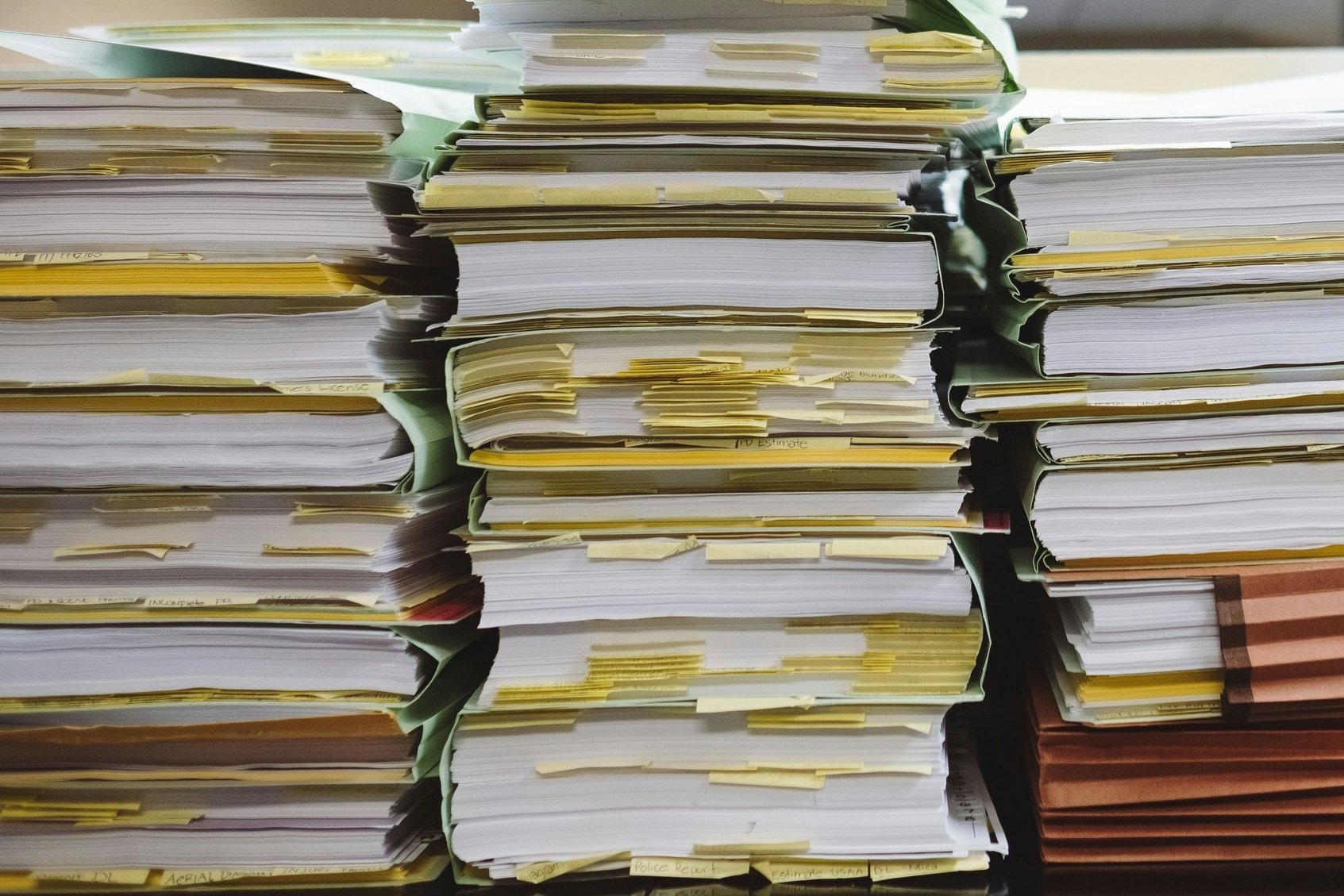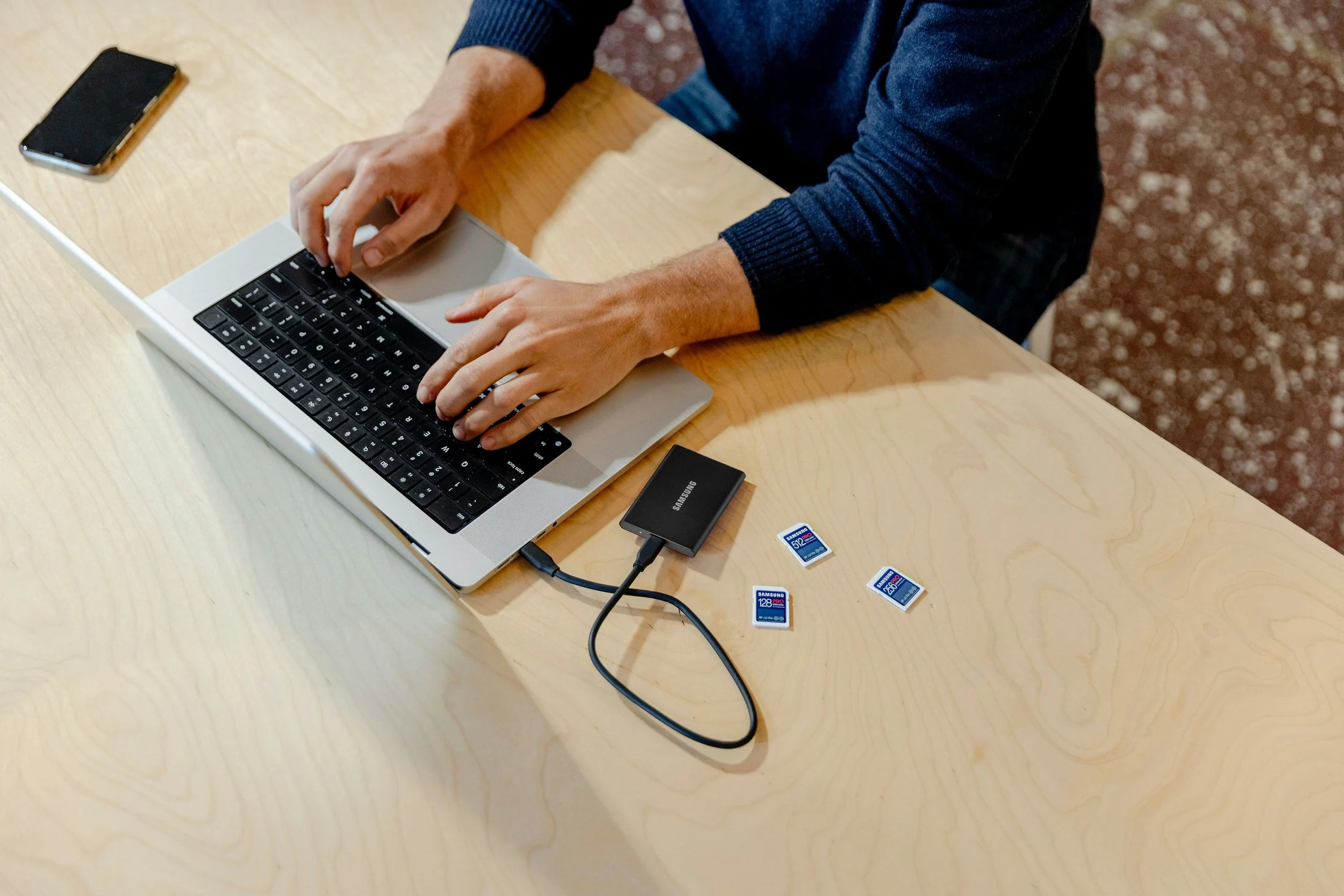Here’s Why Digitizing Needs to Be Part of Your Home Organization Plan
Protect Your Precious Photos and Important Papers Now By Saving Them Digitally
Chances are, you probably have at least one box of physical photos tucked away somewhere in your home. Whether they’re from your life before digital photography and phone cameras or inherited from a relative, they probably represent a lot of memories you want to hold onto.
I’ll bet you also have either boxes or file cabinets of important documents you need to keep. Wills, deeds, birth certificates, social security cards, children’s report cards, handwritten notes from beloved family members - these are all papers you would retain long-term.
Paper is always at risk of damage, regardless of how it's stored. That’s why we recommend digitizing physical photos and key documents.
Creating digital copies of photos and papers doesn’t always have to be about replacing the physical copies. The point really is to preserve the images. Plus there are other benefits you’ll enjoy from digitizing these items.
Older photos, like these black and white ones, can be better preserved for the future when you have digital copies. (Photo by Debby Hudson, Unsplash)
Here are 5 benefits to digitizing your photos and papers.
1. Easier to preserve
No matter how carefully and lovingly you store photos, they can deteriorate over time. Pictures appear on photographic paper through a complex combination of chemicals and exposure to light. What makes photos possible on photographic paper also makes them difficult to store and preserve well over a long time.
Moisture, light, and temperature all determine how quickly or slowly photos hold up through the years. Images can fade or stick to photos next to them. The same is true for important documents. Although documents deteriorate more slowly, the paper can turn yellow or brittle over time.
Both photos and documents are also at risk of damage from unforeseen events like floods or fires. They can be torn accidentally, stepped on, or drinks spilled on them. Although less dramatic than a flood or a fire, the damage done can be just as serious.
Photo negatives are a little hardier than photo paper, but they’re still susceptible to damage from time, light, temperature, and humidity. Ideally, they should be stored in a cool, dark, dry place.
Digital versions of photos and papers aren’t affected by time or weather. Plus you can make backup copies and store those in different places. You could have copies on an external hard drive as well as your preferred cloud storage.
However you choose to store them, your digital images and files will stand up better than the originals over time. In 10 or 20 years, those digital copies will still look the same as the day they were created. Paper photos, however, will show their age.
Photo negatives can be scanned digitally too, and the quality if often better than with scanning printed photos. Just like prints, negatives can deteriorate over time. (Photo by Annie Spratt, Unsplash)
2. More ways to share
When you have just one physical copy of a photo or document, it’s difficult to share it with friends or family.
Imagine, for example, that your adult son just became a father, and you want to share one of your child’s baby photos with him. He wants to see how much his newborn resembles himself as a baby. You could give him the photo, and it could potentially get lost or damaged. You could take a picture of the photo with your smartphone, but the quality wouldn’t be as good.
If you digitized your family photo albums, it would be easy to share those memories with your adult children, their spouses, your grandchildren, and others. With just a few clicks, you can email photos to relatives in other states or other countries.
3. Makes creativity possible
There are more ways to utilize digital images than paper ones. You can create unique invitations for your daughter’s surprise 30th birthday party by using her baby pictures (which I’m sure she would appreciate). You can use digital photos to create games or quizzes for your next family reunion. For your aunt who suffers from Alzheimer’s, you could curate a book of photos that will help her recall joyful moments throughout her life.
Having digital versions of cherished family photos makes it easier to use them for any number of creative projects for you and your loved ones to enjoy.
4. Enhanced organization
When you have photos in a box or even in an album, you might label them with names and dates. Important papers can be organized alphabetically in file cabinets or boxes. Once you’ve decided how to organize them, that’s it. That’s the way they stay organized unless you decide to later change the way they’re sorted in storage.
With digital files, you can name them any way you want - by date, description, phase of the moon, whatever works for you. You have more flexibility with how you choose to sort them into folders. You can also add tags or labels to files. This gives you more ways to find an item by using the search feature in your virtual storage program or physical storage device.
This is especially true for important documents. If you choose to apply Optical Character Recognition (OCR) to a scanned document, the entire text of a document can be searchable. You can search old correspondence, medical records, or legal documents much faster via computer than by reading through paper files.
You can also choose to add more security features to digital files. You can password-protect vital records, medical records, and even your old diaries if you’d like.
It can be difficult to find what you need when looking through stacks of paper files like this, but digital files make locating information easier. (Photo by Wesley Tingey, Unsplash)
5. Ability to enhance or edit
Remember how we used to unfriend people before social media or digital photos? You could, literally, just cut them out of group photos. The silhouettes of lots of ex-boyfriends and ex-friends haunt old physical photos.
Digital files are much easier to edit than physical copies. Sometimes damaged photos can be restored in the digital versions. Small physical tears on a photo can be repaired in the virtual copy. Dust and scratches can be erased, and colors that have faded over time can be enhanced with the right software.
With digital files, you can edit, enhance, and create with photos in a way that you can’t when you only have physical prints. (Photo by Samsung Memory, Unsplash)
Trust someone local to digitize your photos and documents.
Now that you know some of the benefits of digitizing your physical photos and important papers, here is why it’s a good idea to find someone local to you for this type of service.
Yes, there are lots of large companies that do digitizing, but the way they work is that you box up your items and ship them off. We all know there is a risk involved in shipping anything. Every day packages are lost or damaged in transit. It would be awful if any of your old family photos or significant papers went missing before they could be digitized.
You can minimize risk by trusting someone local to where you live to scan your items.
If you’re in the Atlanta area, we’d be happy to help you with creating digital versions of your photos, photo negatives, and important documents. We offer digitizing as a stand-alone option or as an add-on to any of our other decluttering and organizing services.
You can read more about our digitizing here.
If you’d like more details, have any questions, or would like to book a service, reach out to us.
Michelle Parravani, Designing With Less





